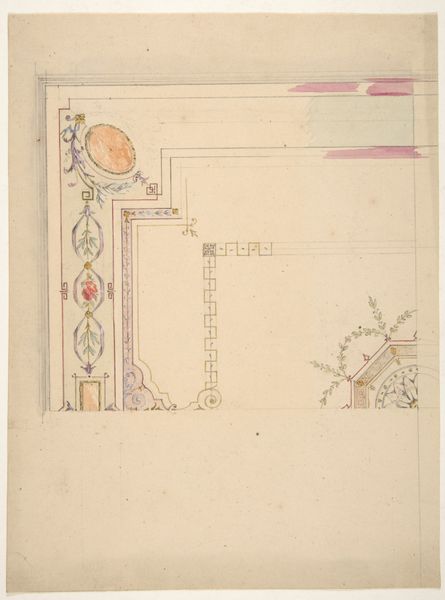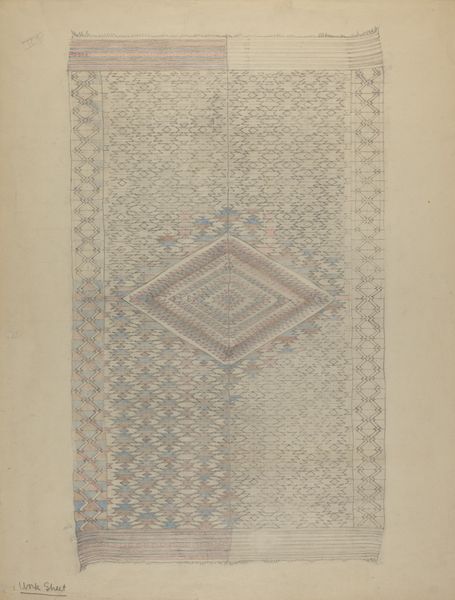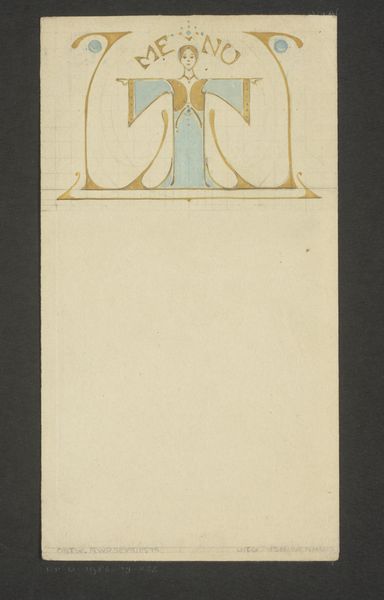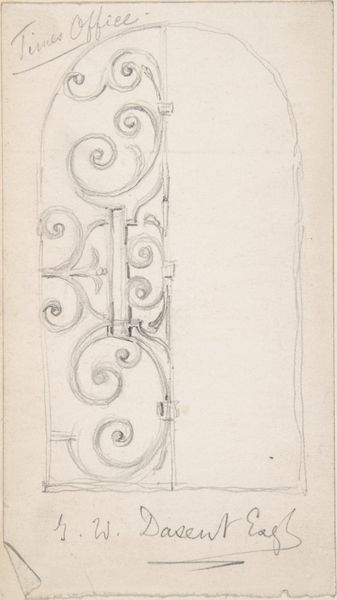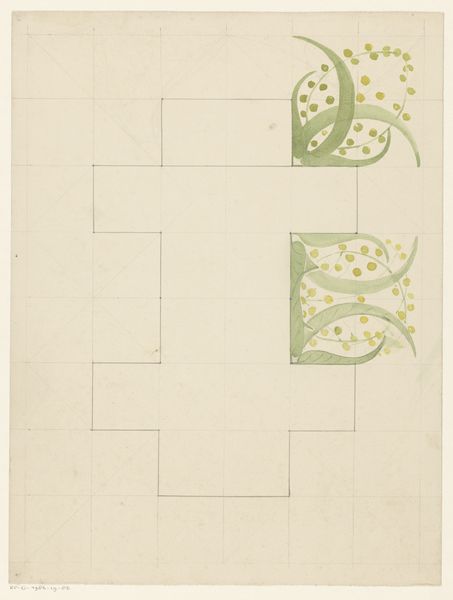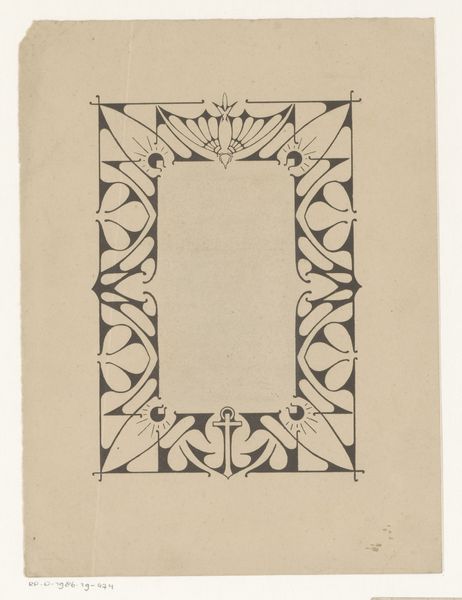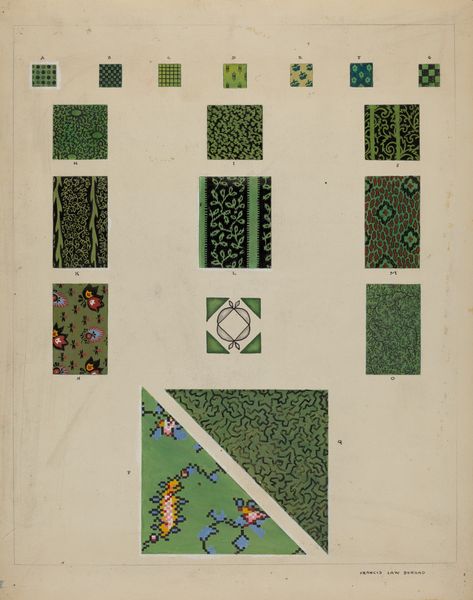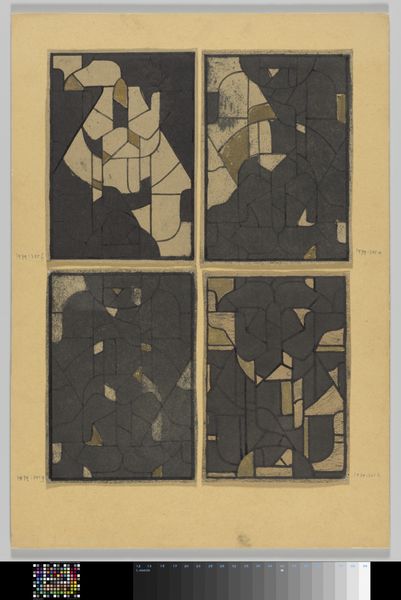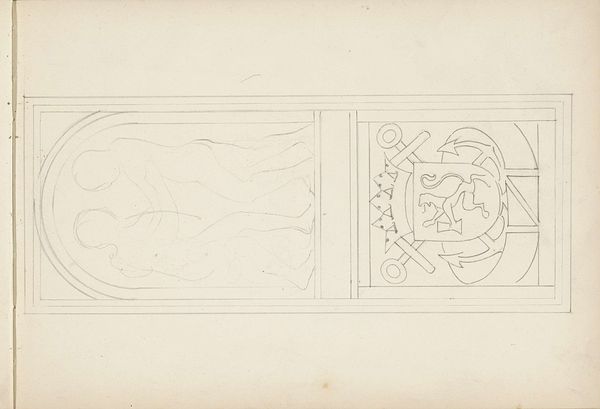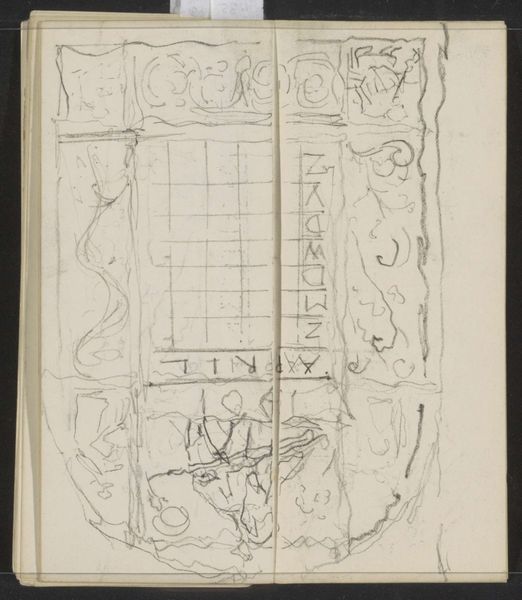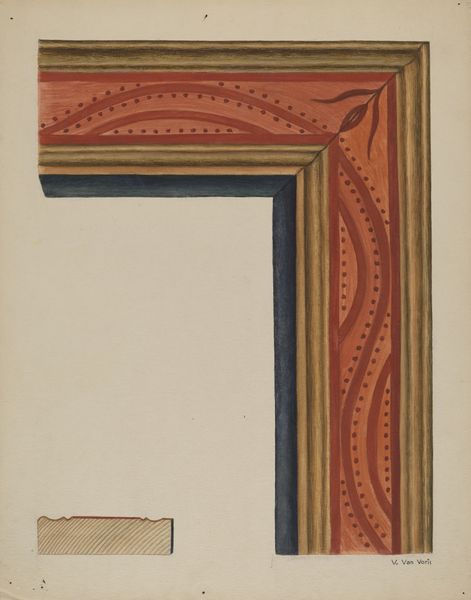
drawing, coloured-pencil
#
portrait
#
drawing
#
art-nouveau
#
coloured-pencil
#
coloured pencil
#
geometric
#
decorative-art
#
miniature
Dimensions: height 280 mm, width 221 mm
Copyright: Rijks Museum: Open Domain
Curator: Here we have "Design for the Central Part of a Collier de Chien" by René Lalique, likely created between 1901 and 1903. It is a study rendered in colored pencil. Editor: Immediately, the Art Nouveau influences strike me. There's this beautiful balance of geometric structure softened by the organic, almost floral forms within the central rectangle. It's quite delicate and gives an immediate impression of luxury, even in this preliminary drawing stage. Curator: Yes, Art Nouveau, with its emphasis on natural forms and intricate craftsmanship, was in full swing. This drawing provides insight into the design process of high-end jewelry during that era, illuminating the transition of art into commercially available items for those with wealth and influence. Editor: Absolutely, and it speaks to Lalique's command over his materials, doesn’t it? Even on paper, you can almost feel the envisioned combination of the precious metals with shimmering enamels or the coolness of pearls represented by those orbs within the composition. One wonders about the labor involved in bringing this design into tangible existence, too. The hands involved in shaping and assembling something so intricate… Curator: Exactly! These pieces, intended to be worn by those at the upper echelons of society, reflect the period’s obsession with displaying status through art. Editor: Status, definitely, but also perhaps a more subversive display of new money. Jewelry as a form of defiance against old norms, of embracing industrial progress combined with romantic idealism. Curator: A complex tapestry indeed. While intended for personal adornment, it also highlights the tensions inherent in the commercialization of art—something Lalique navigated masterfully. Editor: And what this colored pencil drawing really makes me appreciate is the planning that went into the creation of what was going to become jewelry; the connection between design, hand, and body feels direct. I find that incredibly powerful. Curator: Indeed, this drawing shows the artist's intent as well as the social dynamics in the late 19th-early 20th century; something like this offers so much cultural insight, really. Editor: Precisely. Considering the drawing like this gives a deeper, layered sense of understanding of art creation.
Comments
rijksmuseum about 2 years ago
⋮
Around 1900 the widespread interest in nature, neo-styles, and art from far-flung places developed into the art nouveau, or jugendstil style of decorative art. In this drawing of a dog collar necklace René Lalique, the greatest French jewellery designer of this period, displays his love for design as an art form. The use of pearls and enamel in blue tints is at the service of the design: it is not just about the materials as such.
Join the conversation
Join millions of artists and users on Artera today and experience the ultimate creative platform.
